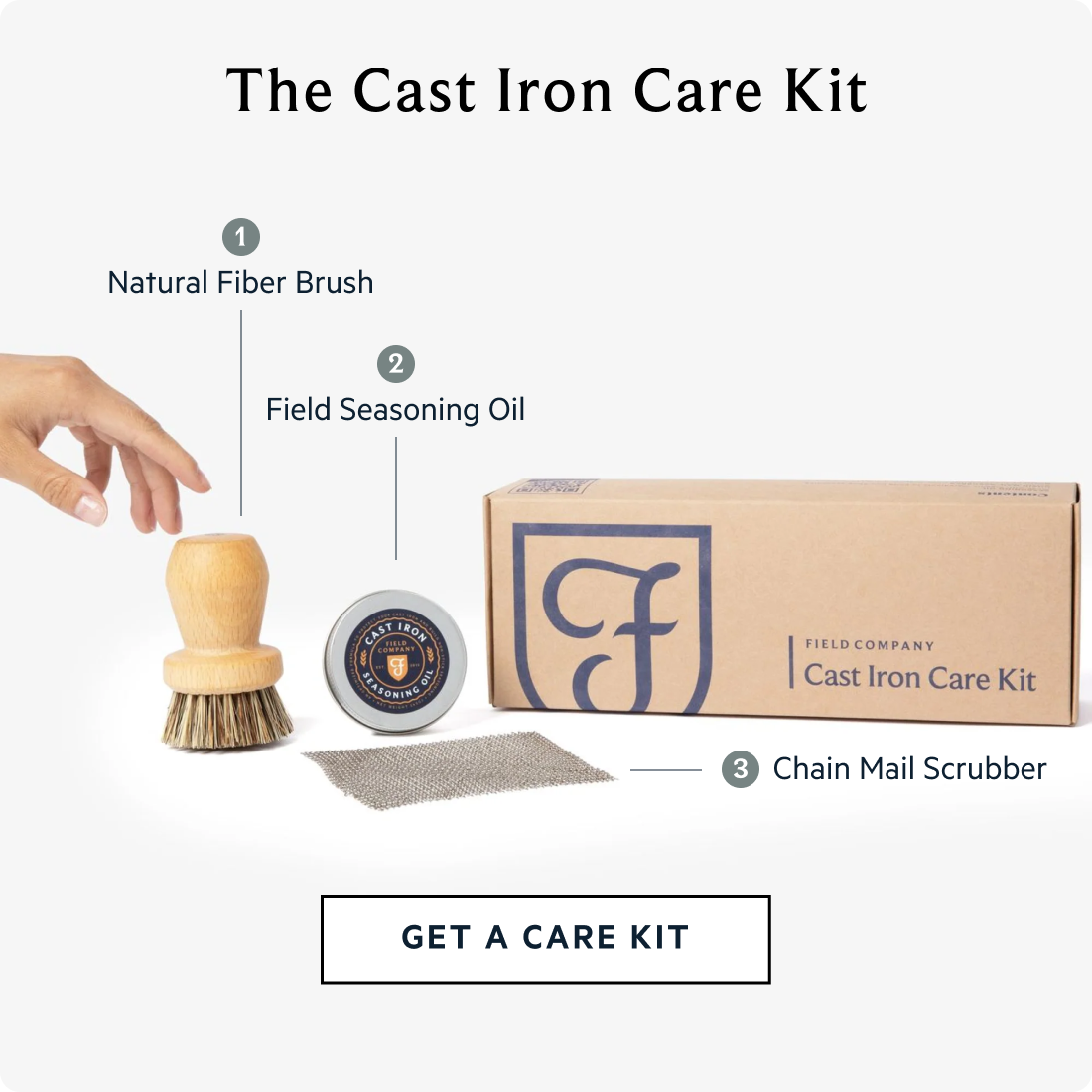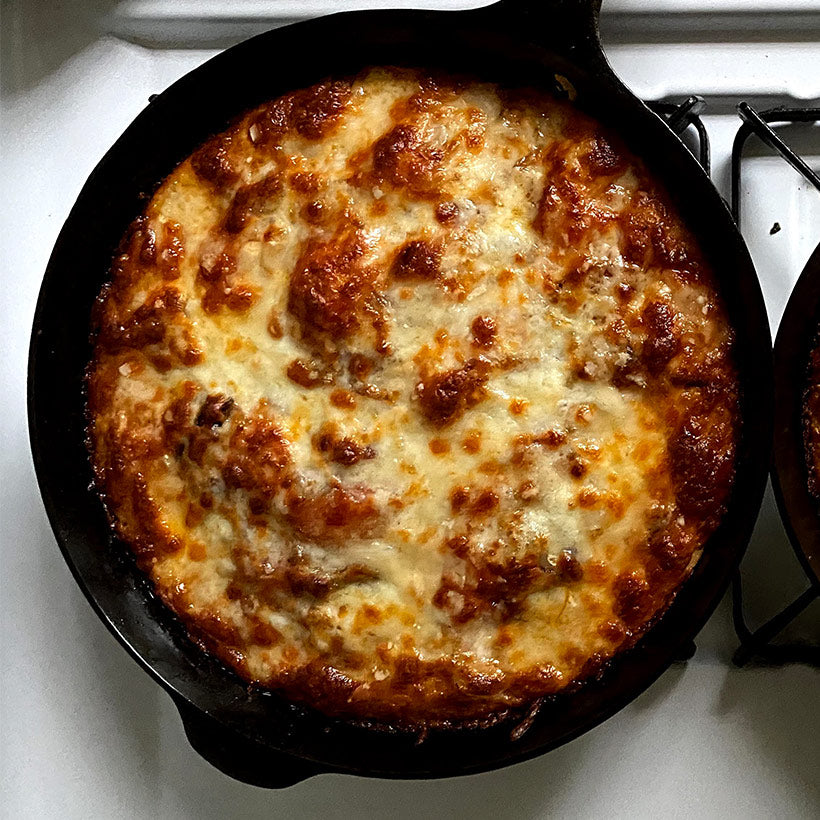Are you a pizza purist, or do you have a topping combo you swear by? Any surprising food pairings that worked?
I truly love a marinara with heaps of garlic, good anchovies, and Calabrian chili. I’m also a sucker for a pepperoni pie with hot honey. So…deep down…maybe I am a purist? But when I try pizza at restaurants, I go for both a classic and then something wildly unique.
If someone doesn't have a pizza oven, what are some of your top tips for making great pizza in a cast iron skillet in the oven?
Preheat the oven with the cast iron skillet in it. Get it piping hot. Then carefully take it out of the oven, drizzle olive oil on the bottom, add your stretched pizza dough and toppings. Bake in the oven. And voila! It’s almost like a pizza Fritti. I honestly love it this way.
Field Note:
While cooking with Ines, we made two pizzas—one in the No.12 Field Skillet in a conventional oven, and one in the No.8 in her outdoor pizza oven. Both came out beautifully: crisp, golden, and proof that with the right pan, great pizza is possible in any setup. Get the recipe.










